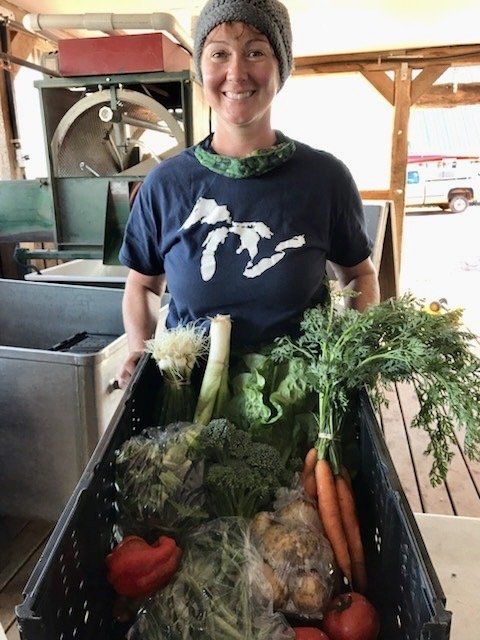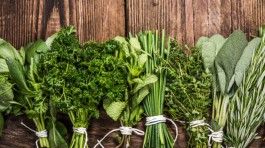Here is the latest issue of Well Vittled, Sleepy G Farm's CSA companion!
Hello Members! We hope you have been enjoying our local, organic, hand harvested produce this summer. It has been a productive season and you still have a few weeks to go with our summer program!
Every season we grow a variety of fresh culinary herbs. These herbs are all available (with the exception of dill – read below) as a swap item or as an extra through Harvie’s customization process. Each of these herbs can be used fresh and many of them can be dried in a well-ventilated spot for a few days to be used later. Herbs are key to unlocking and augmenting flavour in so many of your favourite dishes. Below, you’ll find everything you need to know about storing and using your favorite herbs.
BASIL
Sometimes called Genoa basil, this slightly acidic herb balances licorice and citrus notes. Basil is difficult to store and typically has a short shelf-life. Keep basil leaves dry and wrapped in plastic in a cool place. Don’t use dried basil in place of fresh.
CILANTRO
Cilantro, the fresh leaves and stems of the coriander plant, is also called Chinese parsley. This love-it-or-loathe-it herb is frequently used in Southeast Asian and Latin cuisines. Store it with its stems in water, or wrap it in damp paper towels and store it in a zipper-lock bag in the crisper drawer. Don’t use dried cilantro in place of fresh.
DILL
Dill’s feathery fronds are slightly bitter, with a refreshing, lemony quality and aroma akin to caraway seeds. Dill matches perfectly with cucumbers (both pickled and raw); its summery freshness also works well for seafood, potatoes, and eggs. It’s best used as a finishing herb. Store fresh dill in the refrigerator with its stems in water. Avoid dried dill weed, which is tasteless, but for dishes that require an assertive dill flavour beyond the power of fresh dill, try dill seed from the spice aisle. Our dill this season has been plagued with a leaf disease which killed all 4 beds that were planted incrementally this summer. Next year we will have to try a more disease resistant variety!
MINT
Although there are more than 2,000 varieties of mint, spearmint is the most common. The flavour of mint can be described as smooth and bright, with a eucalyptus quality. Store fresh mint in the refrigerator with its stems in water. Don’t use dried mint in place of fresh.
OREGANO
This hardy perennial shrub has fuzzy, spade-shaped leaves and tough woody stems. Another member of the mint family, it has a potent flavor that can be described as earthy and musty, with a spicy-hot bite. Oregano is great in tomato sauces, chili, Mexican and Latin dishes and sprinkled on pizzas. To store fresh oregano, wrap it in paper towels and place in a bag in the crisper drawer. Dried oregano does not have the same sharp bite as fresh, but it does have a distinct and recognizable floral element.
PARSLEY
Store parsley either with its stems in water or wrapped in damp paper towels and refrigerated in the crisper in a zipper-lock bag. Parsley freezes well (with some discoloration that doesn’t affect flavour) in an airtight container for up to four months.
SAGE
Perhaps best known as the main herb in poultry seasoning, sage flavours a range of foods, from breakfast sausage to turkey stuffing. The flavour of sage is earthy and floral, with a musky bite. To store, wrap fresh sage in damp paper towels and place in a bag in the crisper drawer. Because of its cottony texture when raw, sage should be cooked. In its dried form, we prefer rubbed (or finely crumbled) sage to the ground and chopped kinds.
THYME
Thyme is good in long-cooked soups and stews and with roasted meats and poultry; it pairs well with mustard and lemon flavours. Its flavour mellows with cooking, so we often add extra at the end of a recipe. Wrap thyme in damp paper towels and store in a bag in the crisper.
Dried vs. Fresh Herbs
It is often recommended that if you are substituting fresh herbs instead of dried herbs you must use four times the amount of fresh sage, thyme or oregano compared to their dried version.




